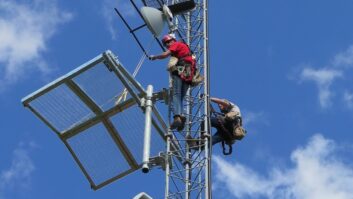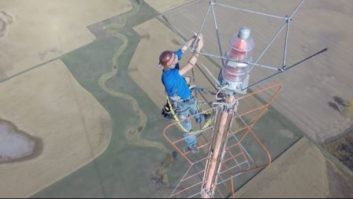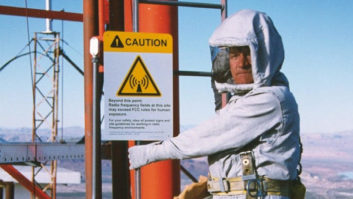OSHA Compliance
Oct 6, 2011 1:05 PM, By Kevin McNamara
The Occupational Safety and Health Administration (OSHA) was formed under the Department of Labor in 1970. The agency is tasked with regulating the safety and health of employees in the workplace. Many people find the regulations promulgated by OSHA to be excessive and expensive to enforce, but the fact remains, these regulations exist and are enforceable by fines and possible jail time. As part of the original OHSA Act, individual states and territories are encouraged to form their own program if desired, “states must set job safety and health standards at least as effective as comparable federal standards.” In many cases the state standards exceed those specified by the federal regulations.
These states and territories have approved State Plans: Alaska, Arizona, California, Connecticut, Hawaii, Illinois, Indiana, Iowa, Kentucky, Maryland, Michigan, Minnesota, Nevada, New Jersey, New Mexico, New York, North Carolina, Oregon, Puerto Rico, South Carolina, Tennessee, Utah, Vermont, Virgin Islands, Washington and Wyoming. The plans in Connecticut, Illinois, New Jersey, New York and the Virgin Islands cover public sector (state and local government) employment only.
All typical broadcast stations have portions of the operation that could trigger potential OSHA or state scrutiny. Obviously stations with old facilities, particularly transmitter sites are the most likely areas, but even the newest facilities could have hidden issues. Here are a few areas of safety to consider.
Asbestos
Any construction activities that might disturb materials containing asbestos are prohibited under law. The materials must be sampled and identified by a certified person prior to working in the subject area. Typical asbestos containing materials could include: insulation, roofing materials, fireproofing, plaster, drywall compounds, floor and ceiling tiles, etc.
People involved with the removal of asbestos materials must be trained and comply with all OSHA, EPA and state regulations. The federal OSHA standard requires that personnel working with asbestos be trained, monitored for exposure and medically evaluated. Personal Protective Equipment (PPE) and engineering controls must be used in the removal process. There are also extensive requirements for the subsequent handling and disposal of asbestos containing material.
Lockout tagout (LOTO)
Making sure the power is de-energized from a cabinet you are working on seems obvious, but from my years in the business, that may not always be the case. Over the years, engineer fatalities and injuries have occurred when engineers were called to the transmitter site and tried to quickly fix something only to touch an energized component while grounded. LOTO takes this to a higher level, requiring a worker to physically lock and tag circuit breakers and disconnects to prevent another person from inadvertently turning it back on. Even the minimum OSHA requirement for LOTO requires this process as well as ensuring the discharge of any stored energy, such as that from a dc power supply.
Confined spaces
Not as common in a broadcast facility but worth talking about is working in a confined space, which is characterized as a space large enough for a person to enter, but with limited egress. The space may also contain some form of hazard such and toxic gasses, electrical equipment, potential to fall or a mechanical hazard. Activities occurring in a confined space required a permit, which can be obtain upon proper showing that all conditions have been met for safe entry and that an emergency plan has been devised.
– continued on page 2
OSHA Compliance
Oct 6, 2011 1:05 PM, By Kevin McNamara
Tower climbing
According to Wireless Estimator there have been five deaths so far in 2011 as a result of climbing communications towers. Two of the reported fatalities were the result of a rigging failure with a gin pole during the construction of a 500′ broadcast tower in Indiana.
This is perhaps why tower climbing is ranked among the most dangerous jobs in the United States. OSHA addresses the issue of fall protection under OSHA Fall Protection Code 1910.66 App C, which outlines the compliance of fall protection requirements for climbers on communications towers and other structures. The American National Standards Institute (ANSI) has developed a more comprehensive standard that incorporates all of the requirements in the OSHA regulation and clearly defines issues generally not fully defined within OSHA law, such as hazard analysis, rescue plans, and anchorage requirements for fall restraint systems and work positioning systems. This is known as ANSI Z359.2 and is the generally accepted standard most tower climber training and safety programs utilize. All personnel climbing towers should be certified by a recognized certification organization such as NATE or Comtrain. Always ask to see proof of certification (typically called a climb card).
Hearing protection
Many on-air personalities have mild to severe hearing loss as a result of spending their shift with monitors and headphones cranked. OSHA specifies the maximum amount of sound exposure in CFR 1910.95.
According to the rule: When employees are subjected to sound exceeding those listed in Table G-16, feasible administrative or engineering controls shall be utilized. If such controls fail to reduce sound levels within the levels of Table G-16, personal protective equipment shall be provided and used to reduce sound levels within the levels of the table.
Duration per day (hours)Sound level (in dB A weight, slow response) 890 692 495 397 2100 1.5102 1105 0.5110 0.25 or less115 Table 1. Permissible noise exposure as per OSHA Table G-16. Exposure to impulsive or impact noise should not exceed 140dB peak SPL.
You can find the entire text of this OSHA regulation at www.osha.gov/pls/oshaweb/owadisp.show_document?p_table=standards&p_id=9735.
It might make sense to measure the maximum sound levels from studio monitors and headphones, then lock-down the power amplifiers to the prescribed limits.
There are several more areas that are regulated by OSHA and/or your local state such as the use of personal protective equipment, non-ionizing radiation, exposure to computer monitors and hazard communication to name a few. There are several good evaluation tools that can be searched online to help identify your risks and put together a good workplace compliance program.
McNamara is president of Applied Wireless, Cape Coral, FL.
October 2011
Streaming to mobile devices, a tour of the new CJWV, insight into IBOC mask compliance, the Radio magazine annual salary survey, Field Reports on the Blue Mics Yeti Pro and Harris Intraplex HD Link and more….







